Supporting Movember: Together for Men’s Health
Every November, millions of people around the world take part in Movember initiative— growing moustaches, hosting events, getting active, and most importantly, starting conversations that save lives.
Movember movement started with 30 Mo Bros in Australia in 2003 and has since grown globally including more than 20 countries, raising over €1 billion to fund innovative men’s health projects.
But beyond the moustaches, Movember is about tackling some of the most urgent and under-discussed health issues affecting men:
Mental health and suicide prevention
Prostate cancer
Testicular cancer


Global Impact
Across the world, the Movember Foundation funds programs that improve awareness, research, and access to care:
Movember Conversations – a free interactive tool that helps you learn how to support a friend, colleague, or family member who may be struggling with mental health.
Mental Health & Suicide Prevention Projects – supporting initiatives that strengthen mental resilience and community support networks for men of all ages.
Prostate Cancer Outcomes Registry (PCOR) – improving diagnosis, treatment, and quality of life for patients through global data collaboration.
Movember Impact Reports – transparent updates on funded projects, outcomes, and lives changed.
Movember in Europe
In Europe, Movember is powering evidence-based programs and community initiatives that truly make a difference:
SpeakEasy Workshops – helping people develop the confidence and skills to talk openly about mental health.
Ahead of the Game (AOTG) – building mental resilience and literacy among young athletes, coaches, and parents.
Corporate & Community Challenges – bringing together workplaces, industries, and local groups to raise awareness and funds through creativity, activity, and teamwork.
Ūsai eina and Check Your Balls
Ūsai eina challenge organized by Lietuvos urologų draugija (Lithuanian Urologists Association), which is dedicated to men’s health (prostate & testicular cancer, mental health). The aim: accumulate as many steps (walking/running) as possible during November to support the message of men taking proactive action for their health.
Check Your Balls is an educational public‐health campaign by the Lithuanian Urological Society aimed at young men, to raise awareness of testicular health (especially testicular cancer) and promote self-examination and early medical consultation. It was introduced in April (in part collaborating with the Lithuanian Basketball Federation) to leverage sports and male community channels for better reach.
In Lithuania, men’s health outcomes are an area needing attention: for example, life expectancy for men is lower than many other EU countries. Many men may delay health checks, avoid talking about issues, or ignore preventive screening for prostate/testicular cancer. Initiatives live Ūsai eina and Check Your Balls help break down those barriers. For organizations, this is an opportunity to show corporate interest in employee health, community engagement, and male wellbeing.
Every moustache, every talk, every action makes a difference. This Movember, let’s turn awareness into action — because when men take charge of their health, we save lives.




Finding Strength: Stories and Treatment Paths of Breast Cancer Patients
Common treatment options include:
Surgery: Lumpectomy (removing the tumor) or mastectomy (removing part or all of the breast).
Radiation therapy: Using targeted beams to destroy cancer cells.
Chemotherapy: Medications that kill or stop the growth of cancer cells.
Hormone therapy: Blocking hormones like estrogen that fuel certain types of breast cancer.
Targeted therapy and immunotherapy: Advanced approaches that attack specific cancer cells with fewer side effects.
Modern treatment is increasingly personalized, taking into account genetics, tumor type, and the patient’s overall health.
Inspiring Stories of Resilience
The Marathon Fighter
When Anna was diagnosed in her early 40s, she feared she would never finish her dream marathon. Balancing chemotherapy and training, she adjusted her runs to her energy levels and wore her running shoes even during treatments as a symbol of determination. One year later, she crossed the finish line—hand in hand with her children—proving that cancer could not take her spirit.
A Mother’s Legacy
Maria received her diagnosis during pregnancy. With the guidance of a supportive medical team, she delivered a healthy baby while undergoing carefully monitored treatment. Inspired by her journey, she later founded a support group for other mothers battling cancer, turning her hardship into a legacy of compassion.
The Pink Ribbon Painter
At 62, Sophia turned to art during chemotherapy. Each painting became an outlet for her fears and hopes. Her collection, Colors of Survival, evolved into an exhibition that raised funds for cancer research. Today, her art continues to inspire patients who feel silenced by illness.
From Patient to Advocate
John, diagnosed with male breast cancer at 54, initially felt isolated. Few men realize they too can be at risk. After recovery, he dedicated his life to raising awareness, encouraging men to seek medical advice early. His advocacy has saved lives by breaking stigma and spreading knowledge.
The Role of Community and Hope
Medical treatment is only part of the journey. Emotional support, family encouragement, and survivor networks provide strength beyond medicine. Exercise, art, mindfulness, and patient support groups are increasingly recognized as vital aspects of healing. õ
Pink Run su ANTĖJA
Is an annual charity run in Kaunas, Lithuania focused on supporting women with breast cancer. Organized under the “Pink Ribbon” cause symbolizing breast cancer awareness. It happens on October. More info: https://pinkrun.lt/

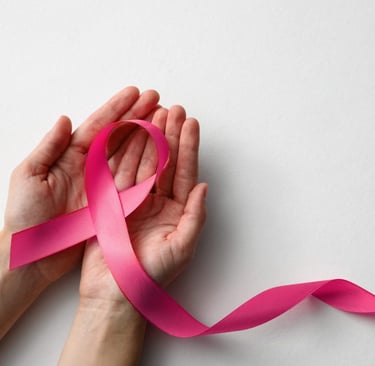
Breast cancer is one of the most common cancers worldwide, affecting millions of women and men each year. A diagnosis often brings fear, uncertainty, and physical challenges—but it also uncovers extraordinary strength. Around the world, countless patients transform their struggles into stories of resilience, proving that life after breast cancer can be full of hope.
Understanding Breast Cancer
Breast cancer occurs when abnormal cells grow uncontrollably in the breast tissue. Early detection plays a crucial role in successful treatment. That is why self-examinations, mammograms, and regular medical checkups are lifesaving tools.
September is Blood Cancer and Urological Cancer Awareness Month
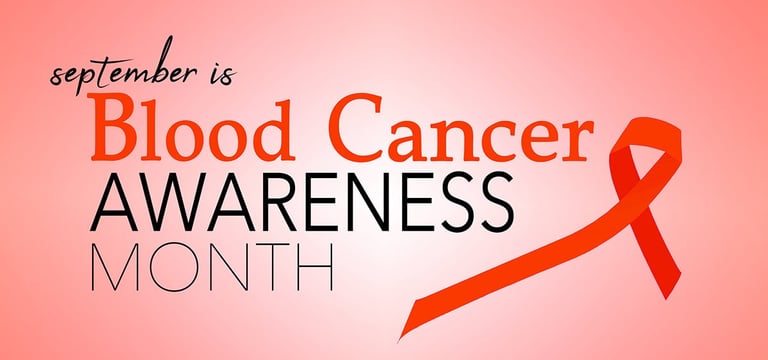

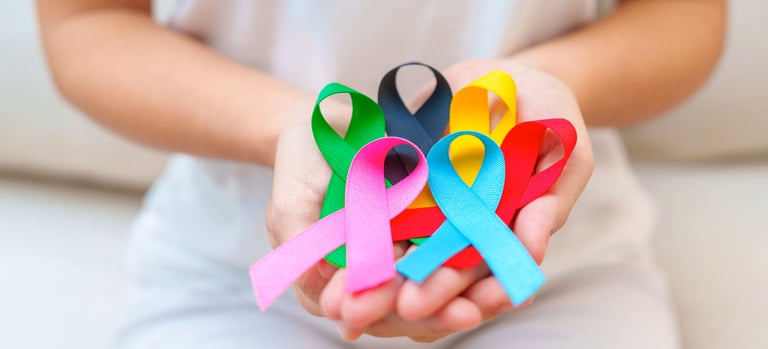

Blood Cancers
General Facts
Blood cancers include leukemia, lymphoma, and multiple myeloma, as well as related bone marrow and lymphatic cancers.
They occur when abnormal blood cells grow uncontrollably, disrupting normal production of red cells, white cells, and platelets.
Unlike solid tumors, blood cancers usually cannot be removed surgically—treatment relies on chemotherapy, immunotherapy, radiotherapy, or stem cell transplants.
Prevalence & Statistics
Blood cancer is one of the most common types of cancer worldwide.
Roughly 1 in every 16 men and 1 in every 22 women will be diagnosed with a blood cancer in their lifetime.
In the U.S. alone, someone is diagnosed with a blood cancer about every 3 minutes.
Around 10% of all new cancer cases globally are blood cancers.
Treatment & Progress
Advances in immunotherapy and targeted therapy have significantly improved survival rates.
Bone marrow and stem cell transplants can be life-saving for many patients.
Clinical trials in CAR-T cell therapy are showing promising breakthroughs in previously untreatable cases.
Awareness & Prevention
Symptoms can be vague—fatigue, bruising, infections—making awareness crucial for early diagnosis.
World Lymphoma Awareness Day (Sept 15) and Blood Cancer Awareness Month (September) help educate communities worldwide.
Registering as a bone marrow donor can directly save lives.
Useful Links & Resources
General Awareness & Campaign Resources
BloodCancerMonth.org: Materials for raising awareness, including posters and social media graphics.
International Myeloma Foundation – Blood Cancer Awareness Month: Campaign toolkit for multiple myeloma awareness.
HealthTree Foundation – BCAM 2025: Events, webinars, and community programs.
Support, Research & Advocacy Organizations
Blood Cancer UK: UK-based charity offering research, patient support, and resources across all blood cancers.
Blood Cancer United (formerly LLS): US and Canada nonprofit offering research funding, patient services, and signature events like Light the Night.
DKMS: International nonprofit focused on bone marrow donor registration and awareness
Association “Kraujas” – a community that unites blood cancer patients, their families, medical professionals, and volunteers. It provides information, emotional support, and promotes donation as well as volunteering.
Urological Cancers
General Facts
Urological cancers affect the urinary tract and male reproductive organs. The most common types are prostate cancer, bladder cancer, kidney cancer, and testicular cancer.
Together, they account for a significant proportion of all cancers worldwide—especially among men.
Risk factors often include age, smoking, family history, obesity, chronic infections, and certain chemical exposures.
Prevalence & Statistics
Prostate cancer is the second most common cancer in men globally, after lung cancer.
Bladder cancer is about three times more common in men than in women.
Kidney cancer represents roughly 2–3% of all adult cancers.
Testicular cancer is relatively rare, but it’s the most common cancer among young men (aged 15–35).
Treatment & Progress
Advances in robot-assisted surgery, immunotherapy, and targeted therapy have greatly improved outcomes in recent decades.
For testicular cancer, survival rates are among the highest of all cancers — with cure rates exceeding 95% when detected early.
Early detection through screenings (e.g., PSA tests for prostate cancer) can significantly improve survival.
Awareness & Prevention
Lifestyle factors like quitting smoking, maintaining a healthy weight, and staying physically active lower the risk of many urological cancers.
Regular check-ups are especially important for men over 50 (or earlier with family history).
Self-examination is crucial for early detection of testicular cancer.
Awareness campaigns—such as Movember—play a major role in breaking stigma and encouraging men to seek help early.
Useful Links & Resources
Ministry of Health PDF on Prostate and Kidney Cancer Treatments using Cryoablation – An in-depth document outlining incidence statistics and insights into cryoablation as a treatment for prostate and kidney cancer in Lithuania.
Urology Care Foundation (American Urological Association) – A key awareness platform focusing on six main urologic cancers (prostate, bladder, kidney, testicular, penile, and others), with factsheets and prevention guidance.
University of Michigan Rogel Cancer Center – Urologic Oncology Patient Education – Offers in-depth, downloadable guides for prostate, bladder, kidney, and testicular cancers, plus resources on fertility, clinical trials, side effects, and support groups.
Bladder Cancer Advocacy Network (BCAN) – Provides free patient handbooks, videos, webinars, support programs, and digital tools to help patients navigate bladder cancer diagnosis and treatment.
Sarcoma Awareness Month and World Head and Neck Cancer Day (July 27)
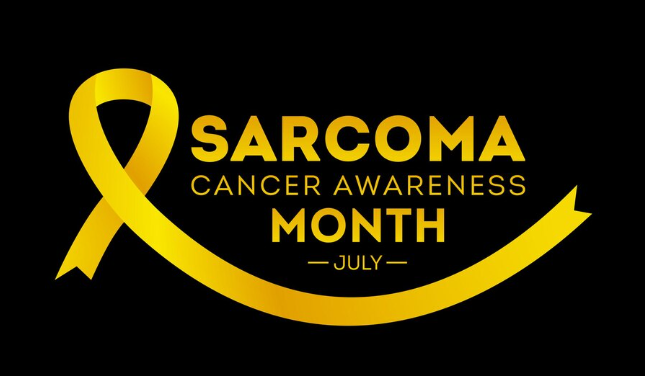

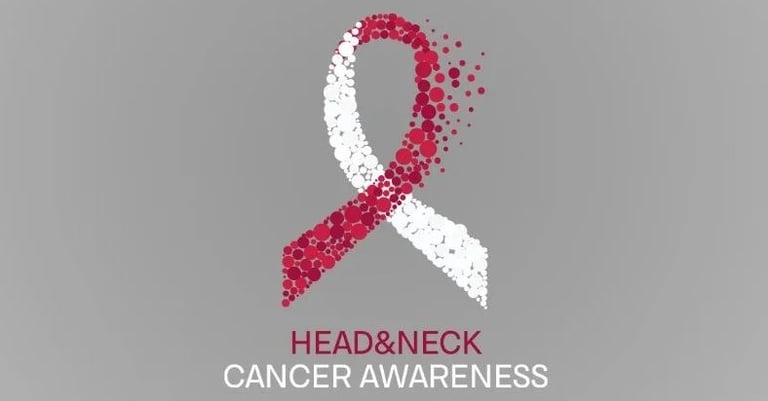

Sarcoma Awareness Month, observed every July, is dedicated to raising awareness about sarcoma—a rare and often misunderstood group of cancers that arise in the bones and soft tissues. With over 70 different subtypes, sarcoma accounts for roughly 1% of adult cancers and 15% of childhood cancers. Because of its rarity and diverse manifestations, sarcoma is often diagnosed late, making awareness crucial for early detection and improved outcomes.
This month is an opportunity for patients, families, healthcare providers, and advocates to come together and spotlight the urgent need for more research, better treatment options, and greater public understanding. Events such as awareness walks, educational webinars, and social media campaigns help spread knowledge about symptoms, risk factors, and the importance of timely medical evaluation for unusual lumps or persistent pain.
By recognizing Sarcoma Awareness Month, we honor the strength of those affected and reinforce the importance of early diagnosis and innovative research. Increased visibility not only helps save lives but also empowers the sarcoma community, fostering hope and connection in the fight against this challenging disease.
Find out more about this topic:
Macmillan Cancer Support
Detailed info on soft-tissue vs. bone sarcomas, symptoms, and early diagnosis.Bone Cancer Research Trust & National Sarcoma Awareness Project
Coordinated educational outreach for UK medical trainees and professionals.
World Head and Neck Cancer Day, observed on July 27, aims to raise global awareness about head and neck cancers, which include cancers of the mouth, throat, larynx, nose, and sinuses. These cancers are often linked to risk factors such as tobacco and alcohol use, as well as human papillomavirus (HPV) infection. Early symptoms can be subtle—such as a persistent sore throat, difficulty swallowing, or a lump in the neck—making public education vital for early detection.
This day encourages individuals, healthcare providers, and organizations to engage in educational campaigns, screenings, and advocacy efforts. By promoting awareness of risk factors and symptoms, the goal is to reduce late-stage diagnoses and improve survival rates. It also highlights the importance of vaccination against HPV, which can significantly lower the risk of some types of head and neck cancers.
World Head and Neck Cancer Day is also a time to support those living with the disease and to emphasize the need for continued research into more effective treatments and rehabilitation. Recognizing this day helps to break stigma, empower patients, and ensure that these often-overlooked cancers receive the attention they deserve.
Find out more about this topic:
Downloadable posters, videos, and details on participation and awareness initiatives.
Head and Neck Cancer Alliance (HNCA)
Annual U.S. observance – provides information on Oral & Head and Neck Cancer Awareness Week each April, featuring free screenings, educational tools, and patient support.
Sarcoma Awareness Month and World Head and Neck Cancer Day (July 27)
National Cancer Survivor Month (USA) and Myeloma Awareness Week (June 16th-22nd)
National Cancer Survivor Month, celebrated every June, honors the millions of people who have faced cancer and are living with, through and beyond their diagnosis. It’s a time to recognize the courage and strength of survivors, while also acknowledging the support systems—families, friends, caregivers, and healthcare professionals—that have helped them along the way. This month serves as a powerful reminder of the progress in cancer detection, treatment, and care, and highlights the importance of continued research and advocacy.
Beyond celebration, National Cancer Survivor Month also brings attention to the unique challenges that survivors face even after treatment ends. Many continue to deal with the long-term effects of cancer, both physically and emotionally. From health complications and financial burdens to mental health struggles and the fear of recurrence, survivorship is a journey that extends well beyond remission. This observance encourages open conversations, support programs, and resources that help survivors thrive in their new normal—and reminds us all of the importance of community and compassion in the healing process.
Cancer survivor stories:
Melissa Dupuis, a new mother diagnosed with breast cancer, who underwent proton therapy. Massachusetts General Hospital
Paul B. Milton, a metastatic testicular cancer survivor, sharing his experience with weight loss during treatment. Oncolink
Kent Taylor, who emphasizes the power of positive thinking and living each day to the fullest after his diagnosis. Massachusetts General Hospital
Jackie, a lung cancer survivor, advocates for radon testing in homes, especially for those who have never smoked. CDC
These stories provide a glimpse into the diverse experiences of cancer survivors, offering inspiration and hope to those currently facing similar challenges.
Myeloma Awareness Week, typically observed in late June, is dedicated to raising awareness about multiple myeloma—a rare and often misunderstood type of blood cancer that affects plasma cells in the bone marrow. This week aims to shine a spotlight on the challenges faced by myeloma patients, from diagnosis delays due to vague symptoms to the complexities of treatment. By increasing public knowledge, Myeloma Awareness Week encourages early detection, supports ongoing research, and highlights the importance of accessible, personalized care.
The observance also serves as a platform to uplift the voices of those living with myeloma and to honor those who have been affected by it. Patients, caregivers, and healthcare professionals come together to share stories, promote advocacy, and support fundraising efforts for improved treatments and, ultimately, a cure. Through community events, educational campaigns, and media outreach, Myeloma Awareness Week fosters a stronger, more informed network of support for everyone touched by this disease.
Some useful links:
International Myeloma Foundation: International Myeloma Foundation (IMF) is the first and largest global foundation focusing specifically on multiple myeloma. https://www.myeloma.org/
Multiple Myeloma Research Foundation: The Multiple Myeloma Research Foundation (MMRF) is the largest nonprofit in the world solely focused on accelerating a cure for each and every multiple myeloma patient. https://themmrf.org/
The Leukemia and Lymphoma Society: The Leukemia & Lymphoma Society is the largest nonprofit funder of leading-edge research for every type of blood cancer, including leukemia, lymphoma, myeloma, and other rare types of blood cancers. https://www.lls.org/
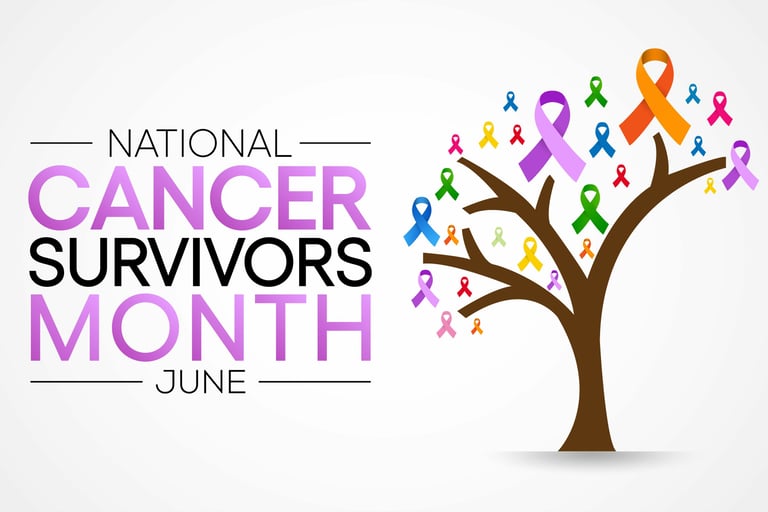

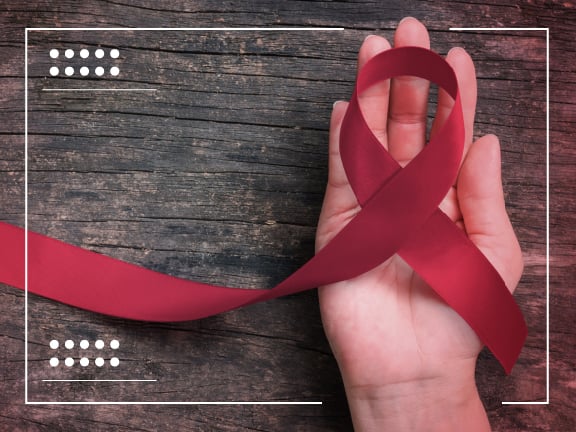

May – Bladder and Skin Cancer Awareness Month
Bladder cancer is one of the top ten most common cancers in Europe, with over 200,000 new cases diagnosed each year. Yet, it remains a largely overlooked disease—despite its prevalence, potential severity, and growing impact on healthcare systems.
A Disease That’s Too Often Missed
Symptoms like blood in the urine or frequent urination are often dismissed or misdiagnosed—especially in women. Early diagnosis dramatically improves survival, but delayed recognition remains a major challenge across many European countries.
Who’s Most at Risk?
People over 55
Smokers (tobacco is a leading risk factor)
Workers exposed to industrial chemicals (e.g. in dye, rubber, or paint industries)
Men, who are 3 to 4 times more likely to be diagnosed—but women often face worse outcomes due to delayed detection
Why Bladder Cancer Awareness Matters
Public and workplace awareness remains uneven across the continent. By raising our voices, sharing resources, and encouraging people to act on early warning signs, we can reduce late-stage diagnoses and support better patient outcomes.
What You Can Do This May
Talk openly about bladder health—especially with older relatives, friends, or colleagues
Support EU-wide and local cancer awareness initiatives
Encourage your workplace to include bladder cancer in health campaigns or wellness programmes
Let’s use this month to push for earlier detection, more informed care, and better support for those affected by this often-overlooked cancer.
Explore this topic more:
Verywell Health – Bladder Cancer Overview
Provides an accessible summary of bladder cancer types, staging, risk factors, and treatment options. Verywell Health
Bladder Cancer Advocacy Network (BCAN) Handbooks
Free downloadable resources for patients and caregivers, covering topics from diagnosis to treatment and survivorship. Bladder Cancer Advocacy
ClinicalTrials.gov
A comprehensive database of clinical trials worldwide, allowing patients to search for studies based on location, condition, and treatment type.
Lithuanian Urological Society (Lietuvos urologų draugija)
This society provides information on urological health, including bladder cancer. They aim to optimize urological care in Lithuania and support both professionals and patients.
Skin cancer is the most common type of cancer worldwide, and Europe is no exception. Each year, hundreds of thousands of people across Europe are diagnosed with skin cancer—including both melanoma and non-melanoma types. Yet, it remains one of the most preventable cancers we face.
Why Europe Should Pay Attention
Despite our often mild climate, skin cancer rates continue to rise across the continent—especially in Northern and Western Europe. Increased travel, sun exposure during holidays, and the popularity of tanning (both outdoors and in salons) have all contributed to growing risks.
Key Facts:
Melanoma, the deadliest form, is increasing faster than almost any other cancer in Europe
Fair-skinned individuals are at particularly high risk
Over 90% of cases are preventable with simple protection and early detection
Know the Signs
Look for changes in moles, new skin growths, or spots that itch, bleed, or don’t heal. When caught early, skin cancer is highly treatable.
What Can Employers and Professionals Do?
Promote sun safety in the workplace, especially for outdoor workers
Encourage employees to get annual skin checks
Support public awareness campaigns and share information in internal newsletters or social media
Smart Sun Habits Matter
Even on cloudy days or in cooler climates, UV rays can damage your skin. Wear sunscreen, avoid tanning beds, seek shade, and cover up when outdoors.
This May, let’s commit to spreading awareness, challenging myths, and protecting ourselves and our communities. Skin cancer is common—but it's also one of the most preventable.
Explore this topic more:
Euromelanoma is a pan-European initiative led by dermatologists to promote skin cancer prevention, early diagnosis, and treatment. The campaign offers educational materials on recognizing skin cancer signs, understanding risk factors, and performing self-examinations. It also organizes free skin check events across participating countries.
Kaunas Clinics – Department of Skin and Venereal Diseases
Located in Kaunas, this department specializes in dermato-oncology and offers services like dermatoscopy, ultrasonography, and spectrophotometric intracutaneous analysis. They provide both inpatient and outpatient care and are involved in scientific research and training in dermatovenereology.

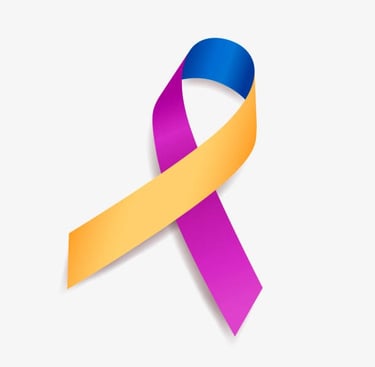
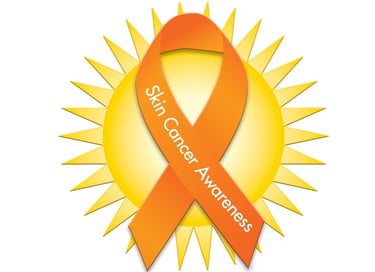

February 4th – World Cancer Day
Today, we stand together to raise awareness, show support, and drive action in the fight against cancer. Every year, millions of lives are impacted by cancer, and on this World Cancer Day, we remember those who have been affected and honor their strength and resilience.
Cancer knows no boundaries—affecting people of all ages and backgrounds. Together through innovation, research, and collaboration, we’re making significant progress in prevention, early detection, and treatment.
At BrachyDOSE we work tirelessly to improve the quality of cancer treatment making patients’ journey easier.
Let’s reflect on the power of community and the importance of supporting ongoing efforts in cancer research, education, and care. Together, we can help create a world where fewer lives are lost to this disease.
Let’s continue pushing forward with hope, compassion, and determination.
More information about cancer prevention below:
https://www.nvi.lt/prevencija/ (Lithuania)
https://www.cancerresearchuk.org/about-cancer/causes-of-cancer/can-cancer-be-prevented-0 (UK)
https://www.cancer.org/cancer/risk-prevention.html (USA)
Worldwide cancer statistics: https://gco.iarc.who.int/en
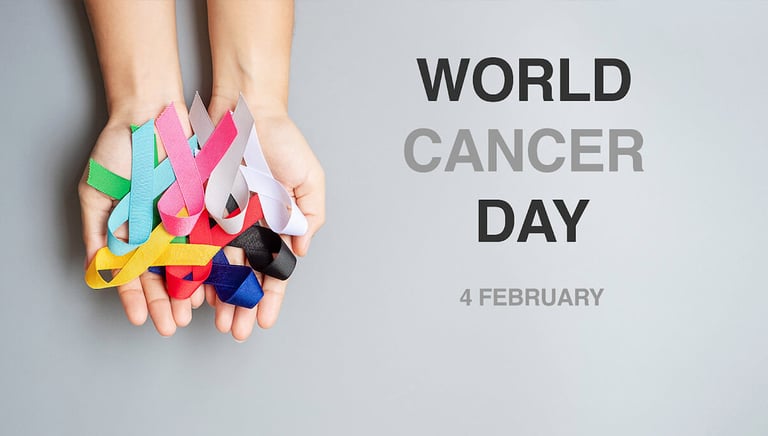

October – a breast cancer awareness month
No one is safe from getting a cancer. Even the worldwide celebrities get diagnosed with breast cancer. Among the most widely known is Kylie Minogue, Christina Applegate, Angelina Jolie, Sheryl Crow and others.
Kylie Minogue was diagnosed with breast cancer in 2005 at the age of 36. She was initially given the all-clear, she later said, only to find a lump shortly thereafter. Kylie had a lumpectomy to remove the small tumor, followed by chemotherapy.
Christina Applegate survived breast cancer in 2008 at the age of 36. Her mother, Nancy Priddy, was also diagnosed with breast cancer while in her thirties, and then again in her fifties. Because of that family history, Christina made a choice to follow an early detection plan that included more frequent screenings starting at age 30. The cancer was therefore detected in an early stage.
Angelina Jolie just like Christina Applegate knew she had a significant family history of breast cancer and chose to undergo genetic testing. She tested positive for a BRCA1 mutation, and had a double mastectomy while in her thirties. It reduced her risk of developing breast cancer from an estimated 87% down to approximately 5%.
Sheryl Crow was diagnosed at the age of 44 with ductal carcinoma in situ (DCIS), a non-invasive form of breast cancer. It was discovered at an early stage through an annual mammogram, and after a lumpectomy and seven weeks of radiation therapy, she was declared cancer-free.
Breast cancer overview
Breast cancer is a disease in which abnormal breast cells grow out of control and form tumors. Breast cancer cells begin inside the milk ducts and/or the milk-producing lobules of the breast. The earliest form is not life-threatening and can be detected in early stages. Invasive cancers can spread to nearby lymph nodes or other organs (metastasize). Metastasis can be life-threatening and fatal.
In 2022, there were 2.3 million women diagnosed with breast cancer and 670 000 deaths globally. Breast cancer is the second most common cancer diagnosed in women after the skin cancer. However, the number of people dying of breast cancer is steadily going down and survival rates have been increasing.
About 80% of breast cancer cases are invasive, meaning a tumor may spread from your breast to other areas of your body. Breast cancer typically affects women aged 50 and older, but it can also affect younger women. Men may also develop breast cancer.
Signs and symptoms of the breast cancer
Most people will not experience any symptoms when the cancer is still early, therefore, it is important to detect it as soon as possible.
Symptoms of breast cancer may include:
· A breast lump or thickened area of skin that feels different from the surrounding tissue
· A nipple that looks flattened or turns inward
· Change in size, shape or appearance of the breast
· Dimpling, redness, pitting or other changes to the skin
· Peeling, scaling, crusting or flaking of the skin on the breast
· Abnormal or bloody fluid from the nipple
People with an abnormal breast lump should seek medical care, even if the lump does not hurt.
Most breast lumps are not cancerous. Breast lumps that are cancerous are more likely to be successfully treated when they are small and have not spread to nearby lymph nodes.
Breast cancer types
Common types of breast cancer include:
· Invasive ductal carcinoma (IDC): this cancer starts in your milk ducts and spreads to nearby breast tissue.
· Lobular breast cancer: this cancer starts in the milk-producing glands (lobules) in your breast and often spreads to nearby breast tissue.
· Ductal carcinoma in situ (DCIS): like IDC, this cancer starts in your milk ducts. The difference is that DCIS doesn’t spread beyond your milk ducts.
Less common breast cancer types include:
· Triple-negative breast cancer (TNBC): this invasive cancer is aggressive and spreads more quickly than other breast cancers.
· Inflammatory breast cancer (IBC): this rare, fast-growing cancer looks like a rash on your breast.
· Paget’s disease of the breast: this cancer affects the skin of your nipple and may look like a rash. Less than 4% of all breast cancers are Paget’s disease of the breast.
Breast cancer causes
The exact cause of most breast cancers is unknown. Breast cancer happens through a complex interaction of genetic makeup and the environment. However, certain factors increase the risk of breast cancer including age, obesity, harmful use of alcohol, family’s history of breast cancer, history of radiation exposure, reproductive history, tobacco use, and postmenopausal hormone therapy. Certain inherited high penetrance gene mutations greatly increase breast cancer risk – the most dominant being mutations in the genes BRCA1, BRCA2 and PALB-2.
Things you can do to lower your risk of breast cancer
· Get to and stay at a healthy weight: ask a healthcare provider for information on setting up healthy weight management.
· Eat a healthy diet: some studies show a diet that includes vegetables, fruit, calcium-rich dairy foods and lean protein may reduce your risk of breast cancer. Avoiding red meat and processed meat may also reduce your risk.
· Exercise: regular physical activity lowers breast cancer risk.
· Avoid beverages containing alcohol: research shows a link between breast cancer and alcohol.
· Get screened: mammograms often detect tumors when they’re too small to be felt.
· Do regular self-exams: examining your breasts regularly helps to maintain breast health and may allow you to find breast cancer tumors.
Breast cancer treatment
Doctors combine treatments to minimize the chances of the cancer coming back (recurrence).
Breast cancer surgeries include:
· Mastectomy (removing the breast)
· Lumpectomy (removing a lump from the breast)
· Breast reconstruction
Surgery may be combined with one or more of the following treatments:
· Chemotherapy
· Radiation therapy, including intraoperative radiation therapy (IORT)
· Immunotherapy
· Hormone therapy, including selective estrogen receptor modulator (SERM) therapy
· Targeted therapy
Surgery may remove just the cancerous tissue or the whole breast. Surgery may also remove lymph nodes to assess the cancer’s ability to spread.
Radiation therapy treats residual cancerous cells left behind in the breast tissue and/or lymph nodes and minimizes the chances of cancer recurring.
Medicines to treat breast cancers are selected based on the biological properties of the cancer as determined by special tests.
Sources:
https://www.mayoclinic.org/diseases-conditions/breast-cancer/symptoms-causes/syc-20352470
https://my.clevelandclinic.org/health/diseases/3986-breast-cancer
https://www.who.int/news-room/fact-sheets/detail/breast-cancer
https://www.nationalbreastcancer.org/about-breast-cancer/celebrities/
More on breast cancer history:
https://www.nationalbreastcancer.org/blog/women-who-changed-the-face-of-breast-cancer/

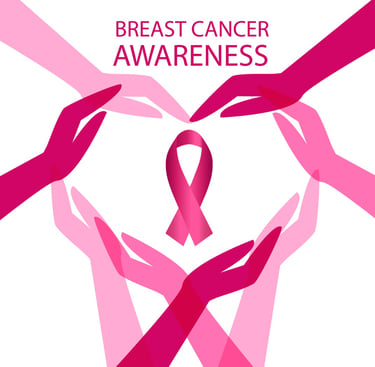
What is brachytherapy?
What is brachytherapy and how it works
Brachytherapy is an internal radiation therapy used for cancer treatment. Seeds, pallets, wires, capsules or catheter that contain the radioactive material are placed inside a body or near the tumor before the procedure. The radiation beams directly to the cancer cells and damages their DNA. The Radiation can either damage DNA directly or create charged particles, called free radicals, within the cells that can in turn damage the DNA. Iodine-125 is the most commonly used isotope for the brachytherapy.
The types of brachytherapy
There are three types of the brachytherapy:
· Low-dose rate (LDR): implant with radiation source stays in the body for one to seven days and continuously releases low doses of radiation.
· High-dose rate (HDR): implant with radiation source remains in the body for 10 to 20 minutes and is removed after the procedure. The treatment may take place twice a day for two to five days or once a week for two to five weeks.
· Permanent (seed implantation): implants or seeds remain in the body permanently. They release radiation continually, but the radiation gets weaker every day.
The techniques used
There are three types of techniques that can be used to perform brachytherapy:
· Intracavity brachytherapy: the radiation source is placed inside a body, near the tumor
· Interstitial brachytherapy: the radiation source is placed within the tumor
· Episcleral brachytherapy: the radiation source is attached to the eyeball
Brachytherapy can be used to treat these kinds of cancer:
Breast
Cervix
Eye
Head and neck
Brain
Lung
Prostate
Uterus
Vagina
Etc.
Sources:
https://my.clevelandclinic.org/health/treatments/16500-brachytherapy
https://www.hopkinsmedicine.org/health/treatment-tests-and-therapies/brachytherapy
https://www.cancer.gov/about-cancer/treatment/types/radiation-therapy/brachytherapy
https://www.barraquer.com/en/treatment/episcleral-brachytherapy
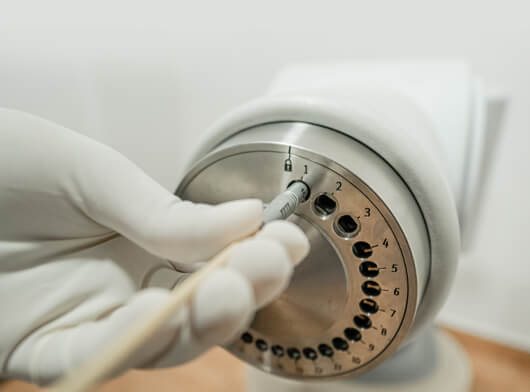

Office Location
K. Baršausko g. 59-B507, Kaunas, Lithuania
Contacts
©2025 BrachyDOSE All Rights reserved
Production of any of the material contained herein in any format or media without the express written permission of BrachyDOSE is prohibited.
